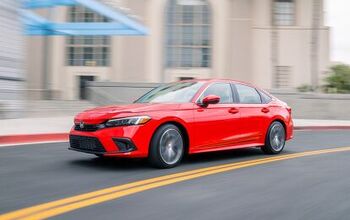Carmageddon's Real Victim: Auto R&D Down $12b in 2009
The car business has endured a lot of bad news over the last several years, as finance-fueled sales crashed with the credit market, and automakers around the world scrambled for government aid. The so-called “Carmageddon” has touched everyone even remotely involved with the automotive industry, not to mention everyone who pays taxes, but from a strictly consumer perspective, it hasn’t been all bad. Certainly the deals have been good, as programs like Cash For Clunkers and the wind-down of several brands have helped savvy shoppers find some of the best deals in a long time. So here’s the reality check: according to Booz & Co.’s Global Innovation 1000 study, spending on research and development by the auto sector was down $12b last year. That’s $12b that should have been spent making your car faster, smarter, safer, cleaner, better that’s no longer being spent. Still feeling untouched?
And yes, this is a problem that’s unique to the auto industry. As one of the report’s authors tells Wards
If you look at the data, (auto makers) cut R&D to sustain their business models. As a percentage of their total revenue, it’s not just the largest dollar amount cut but also the largest percentage reduction of any industry we followed.
And he’s not kidding. In 2008, Toyota was the top R&D-spending company in the world. After a billion and a half dollars in cuts, they’re number four [memo to Toyota, update the file]. In fact, Volkswagen was the only major automaker to not reduce R&D spending last year, as most of the majors shed at least a billion dollars trying to keep their heads above water. It would be premature to predict the onset of 1970s-style automotive malaise based on one year of cuts alone, but unless all those missing billions were being wasted, their absence will be felt in new cars at some point.
More by Edward Niedermeyer
Latest Car Reviews
Read moreLatest Product Reviews
Read moreRecent Comments
- Rochester I recently test drove the Maverick and can confirm your pros & cons list. Spot on.
- ToolGuy TG likes price reductions.
- ToolGuy I could go for a Mustang with a Subaru powertrain. (Maybe some additional ground clearance.)
- ToolGuy Does Tim Healey care about TTAC? 😉
- ToolGuy I am slashing my food budget by 1%.


































Comments
Join the conversation
Anybody know how these numbers are derived / calculated? I only checked for Volkswagen Group, but their annual financial report for 2009 states 5.429 Million € in "Research and Development cost recognized in the income statement" - which would translate to ~7,2 billion dollars (todays exchange rate).
" ... but unless all those missing billions were being wasted, .... "
The law of diminishing returns certainly applies to R&D spending by the big companies. There is also the issue of making good use of global resources. Ford, for example, was duplicating efforts across a host of brands, platforms and regional development centers without getting a corresponding product return for all those billions being spent. Even post cuts, Ford spent almost $5B on R&D in 2009. That is a lot of money.
Sometimes having too much money flowing through the labs and design studios can be just as bad as having too little.